







In each issue we will feature a 'Spotlight' on one of our volunteers. In this issue Alan Herbert talks about his involvement in Waderscrape Hide at Rutland Water, monitoring the Osprey and helping the public get the most out of their experience when visiting

My family used to run a dairy and sheep farm in the Yorkshire Dales so I was introduced to nature and wildlife at a very early age - one of my earliest memories was being shown a lapwing nest in one of the fields. The farm wasn’t very far from some moorland and the evocative calls of Curlew and many other waders was a common sound
My working career was largely spent behind a desk with pen and calculator in hand. However, those early days of being out and about in nature never left me and I would go out birdwatching as often as I could. When the time for retirement came I knew that I always wanted to be able to “give something back” and had decided that I wanted to volunteer in some form of wildlife environment.
Being a regular birder at Rutland Water and with birds of prey being my favourite species, volunteering with the Osprey Project seemed the logical choice
I am sure that the date of 31 March 2020 is etched in everyone ’ s memory as the day I retired, the country went into lockdown and my volunteering debut had to be postponed for 12 months!
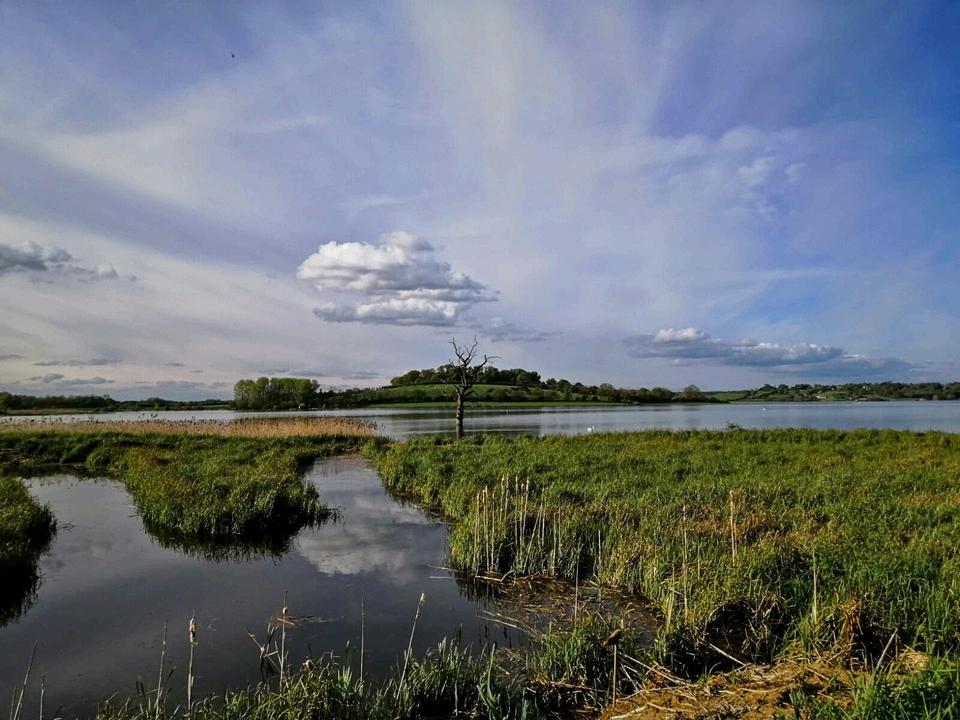
However, in 2021 it was able to start My training sessions started on Sunday mornings with Anna Douthwaite. Anna is an amazing volunteer to learn from and I will be forever grateful for the time and patience she gave me along with the confidence to “ go it alone”.
Even though this is only my 4th season, my role has changed Initially there was a lot more data recording but I am thankful this has reduced to now mainly recording the species of fish caught, along with any intruders into the bay. I imagine it’s also a good thing for George Smith and the team as my handwriting is so bad I’m sure no one could read my records anyway!
It’s also good that we have a separate diary where we can record “non-Osprey” wildlife that we see. I can’t wait for the day when I am able to write “Otter seen ” , but then perhaps nobody would be able to read what I’d put!


My role these days is primarily to show visitors the Ospreys but I also enjoy showing them all the other amazing wildlife that is around the hide, from our resident water voles to cuckoos perched up in the Cormorant Tree.
I volunteer on a Friday afternoon and it never ceases to amaze me the far-away places some of our visitors come from - this year I’ve had a number of people from New Zealand and California
The Project’s appearance on the Countryfile TV programme is often referred to as well and has clearly raised the awareness of the Rutland Water Ospreys
When walking down to the hide I’m always listening to the bird song and seeing which birds are about so that I can tell the visitors what to look out for on their way back to the Centre. I also tell them which fields to spot the Orchids in when they are in flower.
I get a lot of pleasure interacting with the visitors and chatting about all sorts of things wildlife related, but the biggest buzz I get is when young children are in the hide and they see an Osprey for the first time. They utter a great “ wow ” and then you know they’ve seen the majestic Osprey. If we don’t get the younger generation enthused about wildlife then there is no hope
Another fantastic way to see the Ospreys is from one of the Osprey Cruises aboard the Rutland Belle. Really close views can be had and the pressure is on us as “Spotters” to correctly identify a flying Osprey rather than one of the “Blackbacked” Gull species, something which I am afraid to admit I am all too guilty of!



The Leicestershire and Rutland Wildlife Trust has received a generous gift of land for the recovery of nature in Market Harborough. The Trust plans to transform the site into a truly special reserve bursting with wildlife and rich in biodiversity, positioning it firmly within the hearts of the local community while increasing the area of land protected for nature within Leicestershire and Rutland.
The land has been generously gifted by Michael Adler as a beautiful legacy to his son, James Adler, the second of his three sons, who sadly passed away at the age of 42.
Speaking about the land Mr Adler said: “I had always intended to leave this land to James, but he died unexpectedly in May last year. Emotionally I was extremely attached to the land For much of my early childhood I had lived with my grandparents in Great Bowden and had the free run over acres of land. In summer I loved getting up early and going with the family’s Shetland Collie to pick mushrooms and enjoy the quietness of my surroundings, punctuated only by the dawn chorus of many birds ”
“James joined me on visits to the land on several occasions and was the obvious person to take over. With him gone it was clear that the Leicestershire and Rutland Wildlife Trust should be approached to accept the land as a gift ”
“James was CEO of Ashdown Forest in East Sussex. He loved his job and looked after a large area with a variety of habitats including heathland. From his pre-school days James was fascinated by nature. After University he volunteered for Surrey Wildlife Trust and was then employed first as an Assistant Ranger He worked his way quickly through various jobs with The Trust to become Director of Land Management and later, Director of Biodiversity. He was also the National Land Management Adviser for The Wildlife Trusts.”
“James was a natural alliance builder, who could communicate a vision and bring together people of the most diverse backgrounds and interests. He would have loved to have been responsible for the land at Great Bowden and it is most appropriate that the new Reserve is to be named after him ”
The site that will become the James Adler nature reserve will undergo a transformation from pasture into a special place for nature, benefiting the lives of both people and wildlife
Joe Davis, Head of Nature Reserves, explains the value of the land: “There is great potential for wildlife habitat creation and increased biodiversity within this site. Part of the land lends itself to the creation of a wetland habitat, where the river Welland runs through it. Creating shallow pools and areas of standing water would encourage wildlife such as amphibians and dragonflies while helping with local flood alleviation. The land has exciting possibilities for both wildlife and people. We hope to plant woodland to improve biodiversity and capture carbon where the upper parts of the reserve offer greatest potential for woodland expansion Initially we will be studying the land to see what the best options are and to make plans for the land’s future.”
We are now working with our local Great Bowden Group to develop future plans for the site and are excited to see this develop in the coming years The river Welland meanders through the lower sections of the 20 hectare site and the land also includes a mixture of trees and scrub. It is sandwiched either side of the A6 where the main road splits the reserve into two distinct areas.
Mat Carter, LRWT chief executive, said: “We are extremely grateful to Michael Adler The land is of immense importance as it not only allows us to work with local businesses and local community groups in an area where we previously had few nature reserves, it also brings us one step closer to our 2030 strategy of Bringing Nature Back by restoring nature in our two counties. Our nature reserves have increasingly become the last strongholds of wildlife habitat within Leicestershire and Rutland, so this generously gifted area of land will give us this opportunity to use it as another foundational building block towards nature’s recovery within South Leicestershire. It will offer more space for people to join and create relationships with nature in the heart of their community Our vision is to transform the site into a new wildlife-rich nature reserve, in memory of James Adler, and we are inviting all the community to come together for its future within Leicestershire's landscape.”





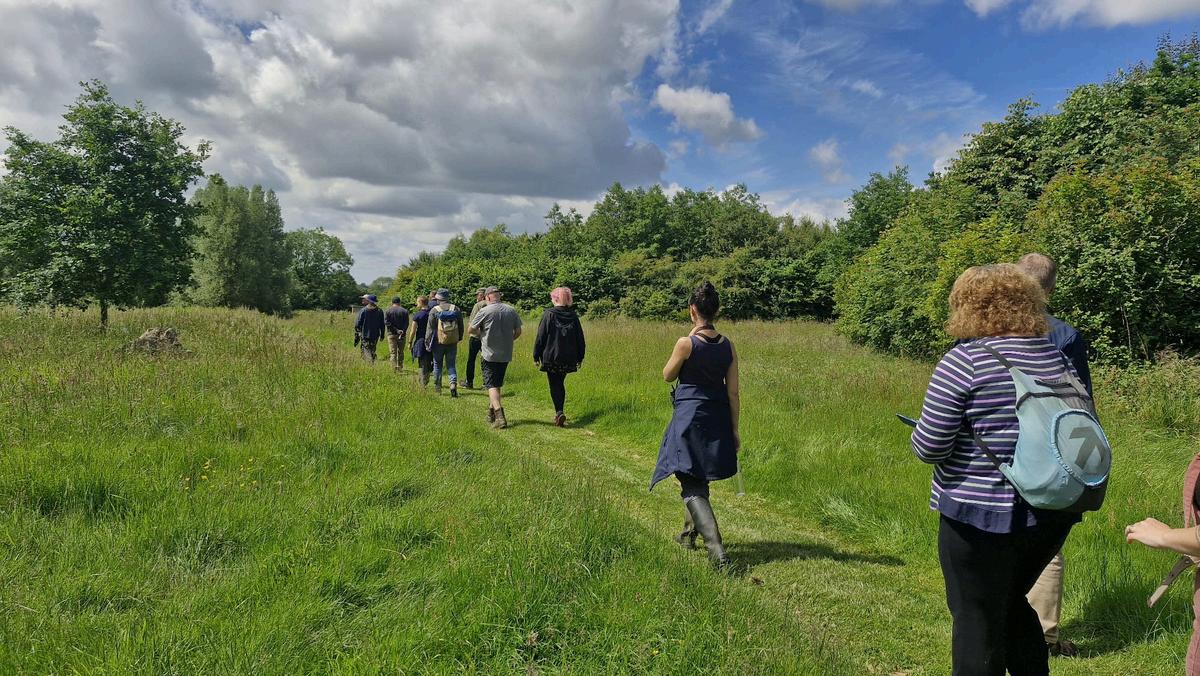


On Saturday 22 June we joined more than 60,000 people and over 350 charities, businesses and action groups to march through central London to parliament. We had one simple but powerful message to all the UK’s political parties – Restore Nature Now
Organisations from across the UK came together for this rally to give nature a voice and to stand up and make the UK government hear the public calling to make nature a priority. It was an amazing experience, with so many people and so much love and support for nature
Last month we took our staff day out to visit some local landowners to see how we can work together for nature and wildlife. It was a beautiful day and we made some great partnerships.
As part of our staff day out we spent a bit of time doing some species identification over the meadow to examine some of the ‘hidden’ invertebrates Big thanks to Tim Sexton for his amazing knowledge and fascinating facts. One of the highlights of the day was seeing a Kingfisher sitting on a rock near a large pond.
If you would like to see how we can work together in partnership for nature and wildlife have a look at our website and our corporate partnerships page: https://www lrwt org uk/corporate
Try your hand at art whilst connecting with nature on our new courses with professional botanical artist Dawn Wright. Dawn's workshops are suitable for both beginners and improvers. Attendees will learn about the art of botanical painting the science behind this fine detailed technique
Providing an introduction to the wonderful world of botanical art, we will explore developing drawing and painting techniques to accurately depict the natural world. The course takes place over 2 consecutive days and offers the opportunity to get hands on in the world of Botanical Art. Please visit the events page of our website to book on to this course.

We are looking for volunteers to help undertake an assessment of water courses within the Trusts nature reserves to determine their suitability to provide a habitat and support our native Water Voles
Volunteers will also complete a survey of the watercourse within the reserve to observe Water Voles or to check for field signs to indicate their presence. You will complete a short survey form to confirm details of the habitat and any field signs found
Training to identify Water Vole field signs and assessment of habitat suitability will be provided. The surveying and monitoring will take place at reserves across Leicestershire & Rutland that have a water course or large waterbody (does not include Rutland Water where monitoring is already taking place).
If you are interested in this volunteering opportunity then please find all of the details on olunteer opportunities section of our ite: https://www lrwt org uk/volunteerrtunities

r Keightley’s amazing triathlon
ncredible Osprey Project volunteer Roger htley competed in the Rutland Sprint hlon, raising money for the Rutland Osprey ct.
ough he was the oldest in the race, Roger hed the competition and left many a younger petitor in his wake He ran, swam and cycled 25 kilometres in under 2 hours!
r has already smashed his original raising target, but please still consider giving ger ’ s sponsorship page and help the work of Osprey project here at Rutland Water: s://shorturl at/xM7Ux

On the 1st Wednesday of every month at 10 30am, our Book Club meet at the Lyndon Visitor Centre The group meet for a social catch-up and to talk about the latest books that have been read. There is a published list of the books being read this year, and for the month of August the selected books are Cairn by Kathleen Jamie, and Wildlife in a Southern County by Richard Jefferies
The meeting is free of charge, but you can purchase hot drinks/cakes in the centre. The book club is open to anyone, so please get in contact if you are interested in joining the group.
Job Opportunity - Senior Nature Recovery Officer

king for a Senior Nature Recovery help us to continue to develop and r Nature Recovery Strategy across hire and Rutland.
ntastic opportunity to join a new team conservation professionals driving covery within the counties This is a and will assist with the development ry of our Nature Recovery Strategy; ith authorities, land managers, bodies and partners to enable nature to d thrive. You will be working to support nce partners and stakeholders, g and delivering new initiatives, making or action and building support for nd collecting the evidence to show the hat are happening.
l details of the job, please visit our ttps://www.lrwt.org.uk/jobs/seniorovery-officer
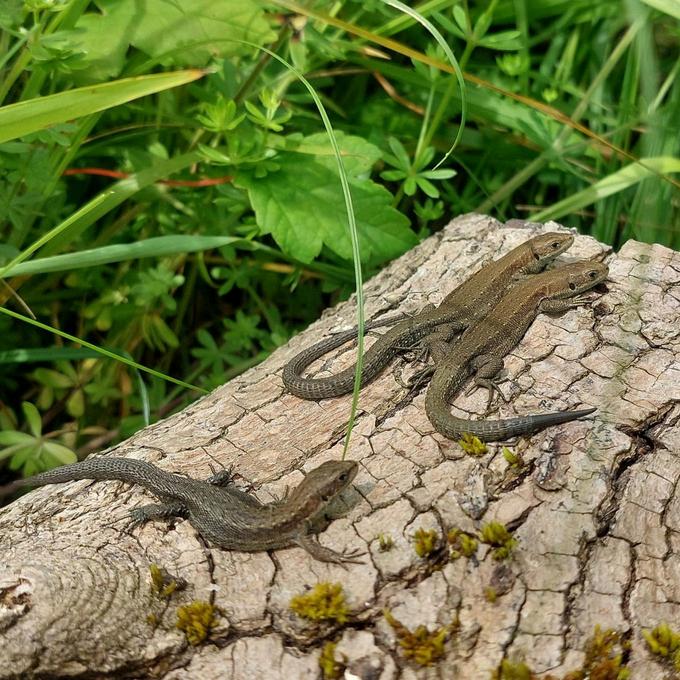








Fee Worton - Nextdoor Nature Community Organiser
So, after successfully applying for a place to be part of a team working the Wildlife Trust stand at Glastonbury this year, with a heart full of wonderful people connections, music and sunshine I am back from what was one of the most epic experiences of my life!
As a Team of 6 recruited from across the federation we represented 6 different Trusts – Joe Phillips from Cheshire, Hannah Phillips from Manx, Ben Neenan from Somerset, Adam Dosunmu-Slater from Derbyshire, Sara BoothCard from RSWT and yours truly from LRWT We’d met on Teams a couple of times before we actually met in person the day we travelled to the festival.
We had to be on site 8 days, a few days early to build the stand and set up camp ready for the start of the festival 8 days
We were working to engage people around the Precious Peatlands campaign to highlight the importance of peatlands as a wonderfully diverse habitat, how it provides valuable ecosystem services and all the ways in which it is still unnecessarily used in our everyday lives raising awareness of the lack of consumer choices we still have. Each of us brought different skills and personalities to the table and team dynamics were well and truly put to the test during the stand build on a very hot and sweaty Tuesday. After unloading all the pieces and estimating a good 2 hours work, it was probably more like 10 hours later that we were finally done and it had been a period during which we had well and truly gotten to know each other! If we could get through that, we could get through anything!
We were there to have conversations; conversations about wildlife, what that means to people and what we can do at home We offered craft activities, peat themed games, children’s stories, opportunities to wear the emperor moth costume and peat poncho, the chance to chill and chat in our tipi full of sundew bean bags and temporary tattoos which were a massive hit!


We made a reel that was shown on the big screen at Woodsies stage, a little funny film about where to find peat Joe spoke on stage at the Restore Nature Now march that took place at the festival (pic below). We gave temp tattoos with our logo to maaaany people, placed in some very interesting places – I even gave Francis Bourgeois (the train guy) a tattoo on his neck! And we flew the Manx and LRWT WT Flag with pride at many performances making it onto the TV for The Streets and The Last Dinner Party!
The weather was stunning, the vibes were amazing and the conversations were interesting. We met like minded people who were keen to volunteer with us and spread the word, we spoke to Fair Trade who advocate for healthy soil and want to have a discussion with RSWT about how they can include peat free soils into their accreditation, we talked at length to the CEO and founder of Neutral Clothing, we spoke with a scout leader who wanted to know everything so she could develop ways in which she could inform all of her young people, and so many more interactions!
A personal highlight was following a story telling session I hosted on the Friday, dressed as an emperor moth, 2 of the children returned the following day, not only for more stories but wearing magnificent wings they’d bought at the festival! And then returned the next day with posters and a thank you letter – the parent said this had been the highlight of their children’s Glastonbury, it was all they talked about, that a core memory had been made, that this work is of huge value and they and their children hope we ’ re back again next year!
I’d like to thank my manager, Laura Brady and CEO Mat Carter for supporting my application to be part of the Glastonbury team, it was THE most incredible experience that I will never forget!

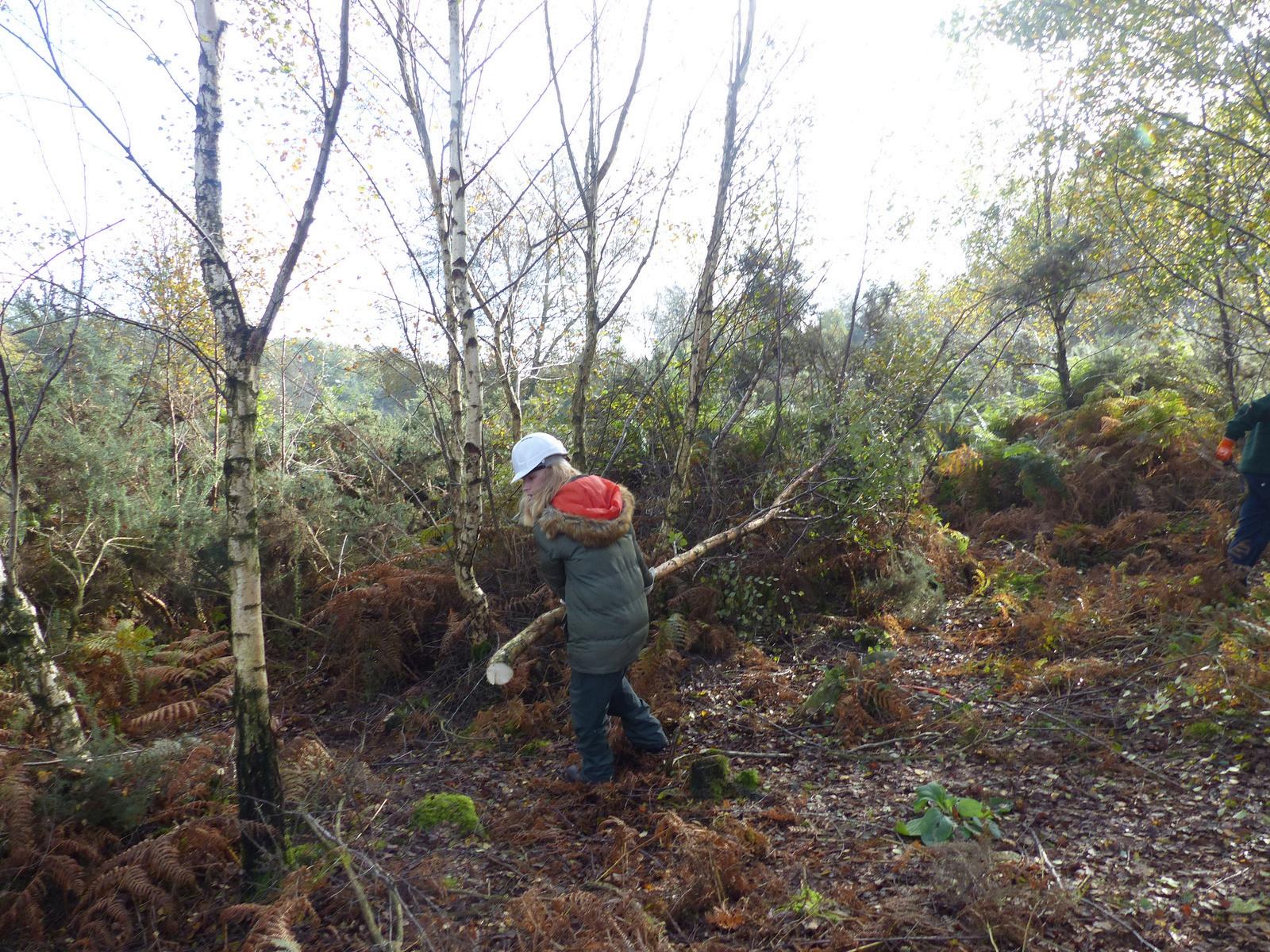
Volunteer and amazing photographer, Nick Crowley shares some pictures from heath grassland work that has taken place at Ulverscroft Reserve Each picture and caption shows the different stages of the work done, and highlights the work that goes into maintaining our Reserves




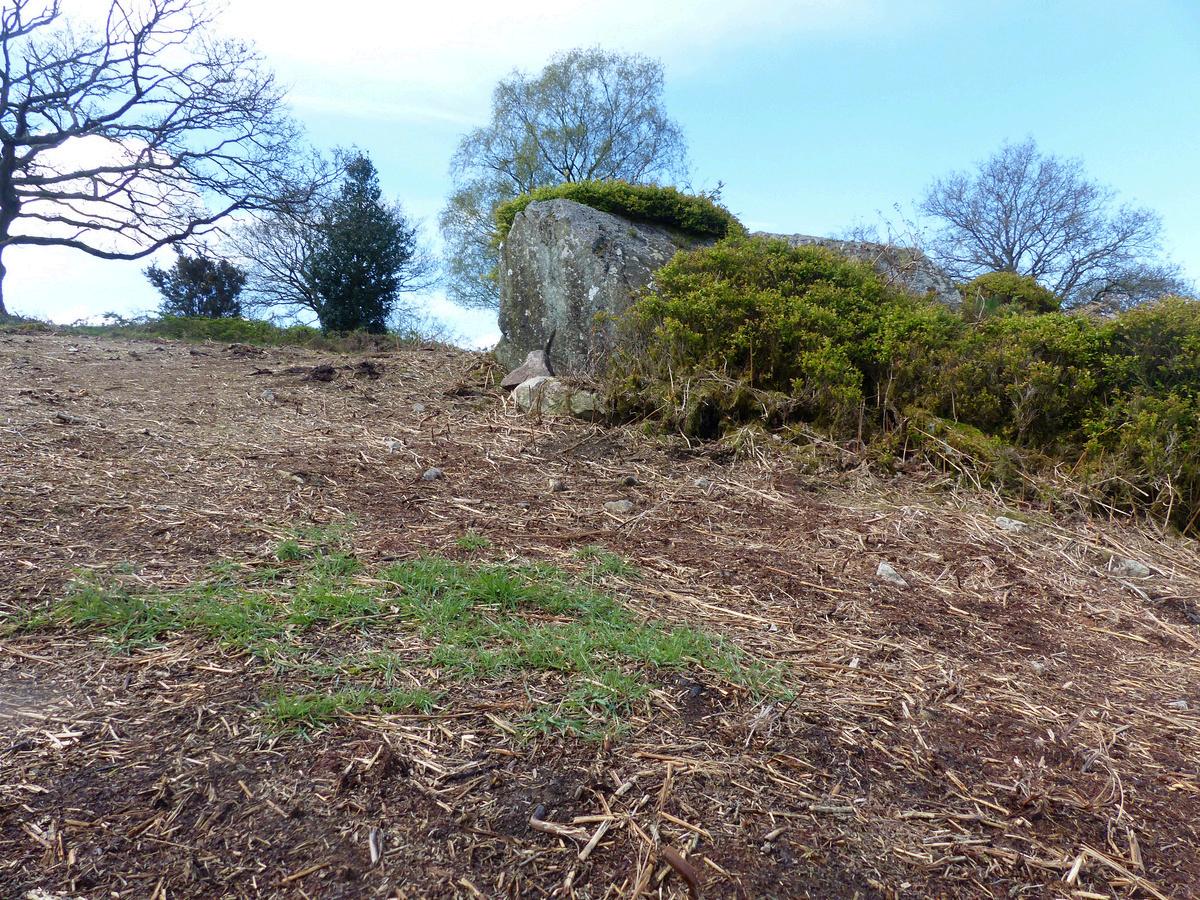



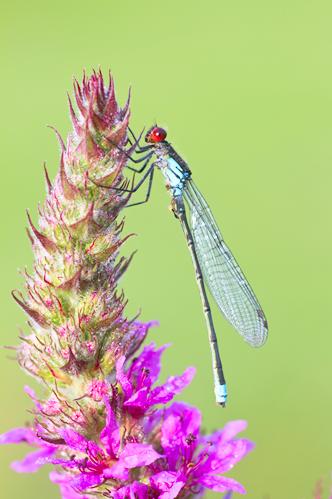
Much of my, and the volunteers, Spring and Summer so far has been focused on the construction of the new boardwalk at Fran’s Pond. Over the winter, Tim and Paul came up with a plan to improve the area known as Fran’s pond with funding from Tony Clarke After building a boardwalk last year for the bird ringers at field 16, myself and the volunteers were drafted in to build boardwalk 2.0! Now after the last boardwalk was dead straight, we were left scratching our heads a bit at all the corners required on this new one. The task didn’t appear any easier when the huge pile of timber arrived and sat in the yard for a few weeks Working out which bit goes where was an interesting challenge but many of the volunteers were able to assist with cutting up the right bits and I am pleased to say so far we haven’t cut any timber we shouldn’t have!
So it was time to begin and the first job was getting support posts in place which meant wading into the pond with a post driver and trying to get a large post to stay firm in a very muddy pond. Extremely hard work I can tell you while trying to use a post driver in waste deep water. Once this was in place though, progress has been really good thanks to all the volunteers and their previous experience An excellent job was done on the first ramp leading up to the boardwalk and a decking area for a bench has been constructed. Two months in and the framework is about to be completed with most of the decking boards in place. Staff and volunteers have enjoyed taking our work breaks on the completed sections overlooking the main pond where we have been spotting lots of the pondlife that has already colonised it.
Highlights in the pond have been a Broad-bodied Chaser laying eggs, lots of Common Blue and a few Red-eyed Damselflies There are also a good number of Great Diving Beetle larvae and Pond Skaters too I am pleased to say we haven’t had to fish anyone out of the pond either so far, despite working right on the edge of it at times!
Hopefully in the next newsletter, I can show you pictures of the completed boardwalk A huge thank you to all those volunteers who have assisted me in this project It has been greatly enjoyable to work on.
Chris Hill - Reserves Officer
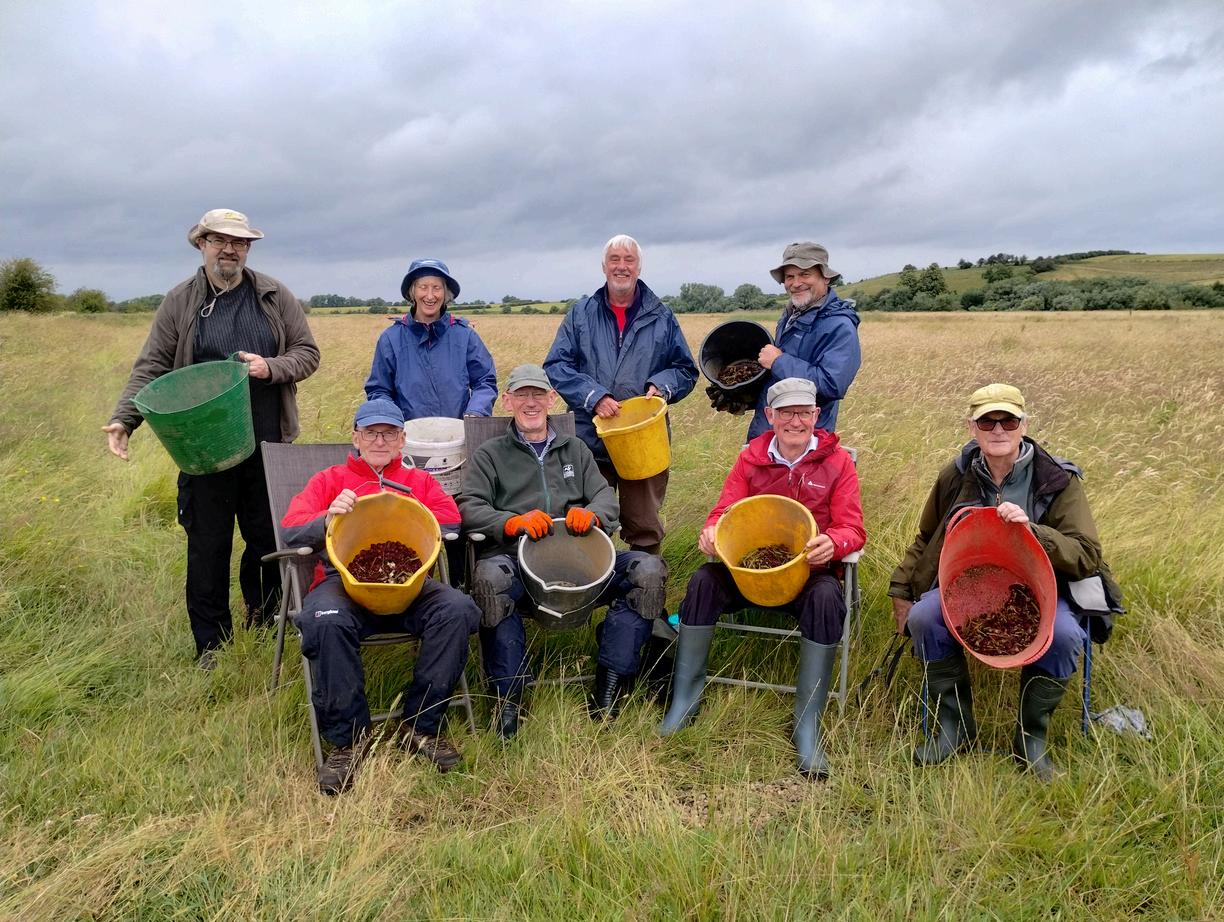
June saw the Tuesday group busy at repairing pot holes and damage to footpaths and tracks at Cossington Meadows The floods earlier in the year were the most powerful our Soar Valley Reserves have witnessed and of course this has resulted in water ripping across the landscape taking everything with it that wasn't nailed down.
Early July was the perfect time for a Wednesday jaunt out to Loughborough Big Meadow SSSI But this time it was to be something a bit more genteel.
Collecting wildflower and grass seed.

If the weather is kind, people who have purchased the right to take the hay are permitted to start on July 1st, so we needed to work fast if we are to take our chosen species of plants. We were targeting meadow barley, sweet vernal-grass, crested dog's-tail, common bent, common knapweed, great burnet, common sorrel and pepper-saxifrage. These seeds will be taken away and dried and then broadcast on selected parts of Cossington Meadows nature reserve
But if we continue to witness these leaden grey skies, hay-making will be stalled until the clouds shift. Enabling the volunteers to re-visit and harvest some lady's bedstraw later in the year.





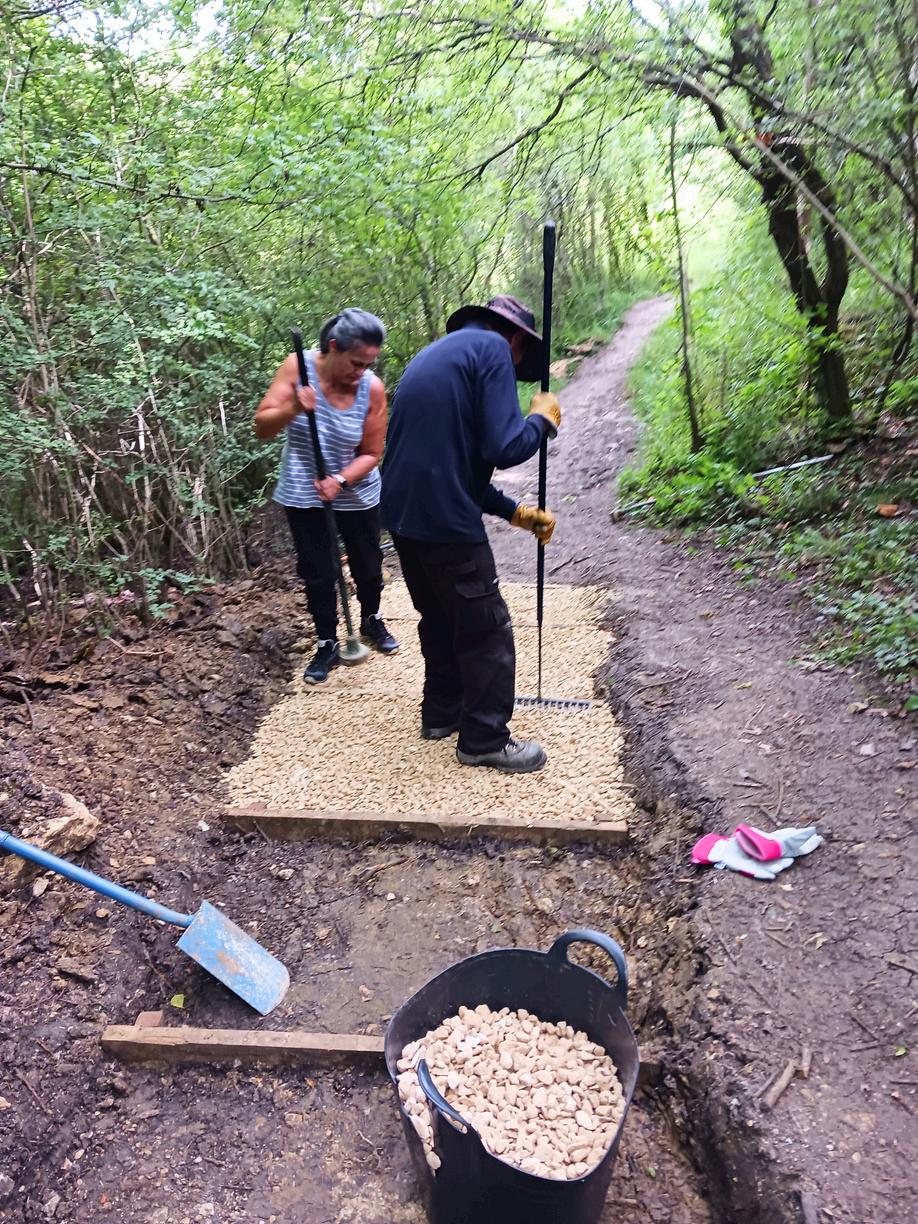
Juliette Colaço-Fournier - Assistant Reserves Officer
Ketton Quarry has a brilliant circular loop that takes you through all the wonders of the reserve, but for most of the year the ‘steps’ and slopes at the end of the valley and geology area were muddy, slippery and rather treacherous So, this year, with thanks to funding from the reserves appeal, the east team decided to tackle the job, landscaping and reshaping the areas to create two functional and safe sets of steps.
We made the decision to start with the geology area as this was just a slope whereas the valley area had existing steps that needed to be improved Due to the size of the area, we were working in and the amount of pick-axe and mattock action, we had to limit the number of people working each day. Despite the soggy clay ground, we made good progress to begin with and after the first 3 sessions had 10/16 steps dug out.
Working in an old limestone quarry proved a good challenge and as we reached the top, the going got harder and each step took a lot more digging out.
Despite the challenging terrain, everyone worked tirelessly and enthusiastically (with a few breaks to look for adders and witness the incredible osmia bicolor building a nest in an empty snail shell) to complete the set of steps and improve access within the site. 1 set down…1 to go.

In order to continue with our usual yearly work plan, we enlisted a small team to work on the valley steps whilst another work party was running simultaneously on another reserve The ‘steps team’ got cracking on the valley steps, digging out and reshaping the existing (very wet and sticky) steps to create a much safer set of steps.
Thanks to the incredible effort of everyone who worked on both steps, we were ahead of schedule and all that was left was to ‘dress’ the steps with limestone aggregate (in keeping with the limestone grassland). We were fortunate to have a generous donation of limestone aggregate from Mick George via the team at Heidelberg Materials. So, on a sunny day at the end of June we received a huge delivery of 10 tonnes of limestone
27th of June marked the ‘dressing of the steps’ and a fantastic team assembled ready and raring to shift the limestone aggregate and dress both sets of steps.
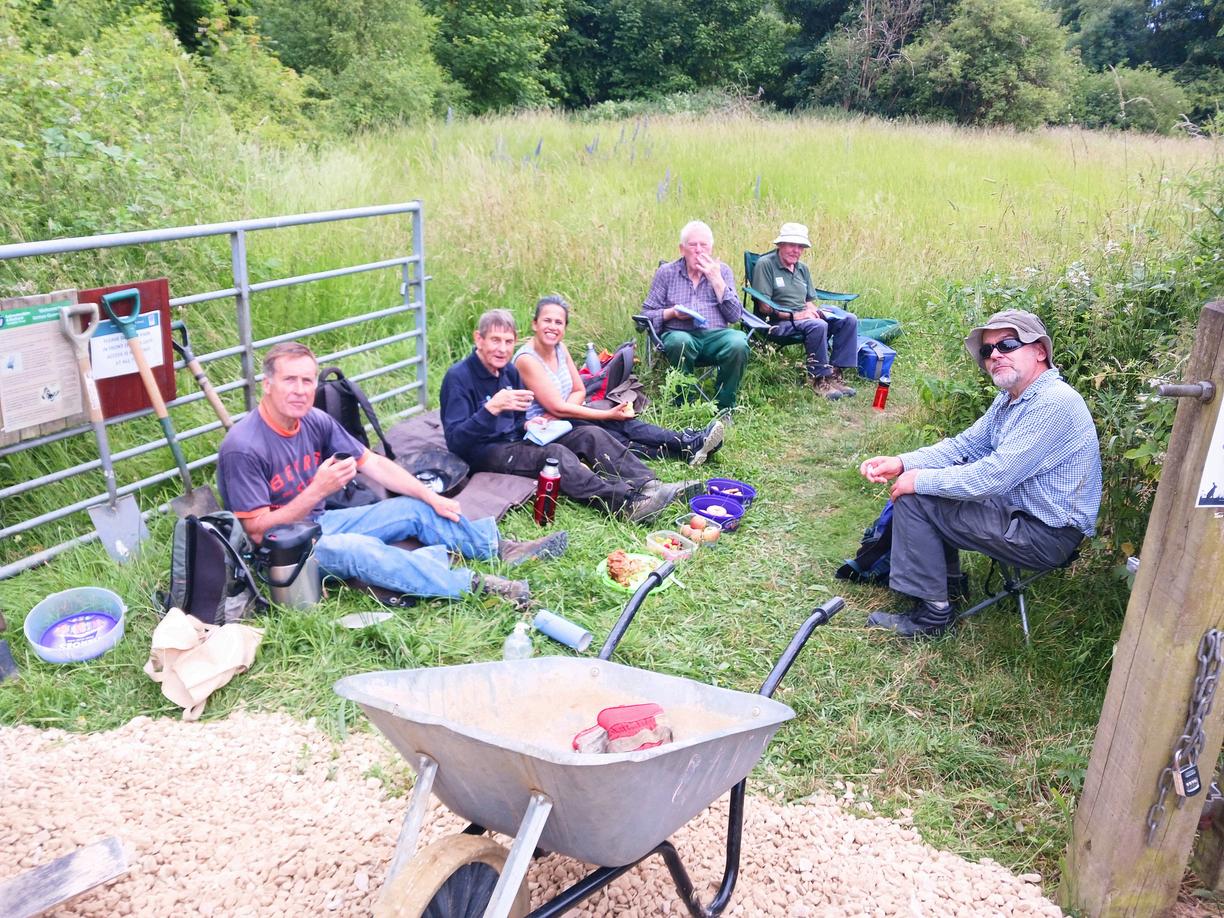
Fuelled by cake, fruit and doughnuts, the team got to work shovelling and barrowing and tamping and raking.
Despite the warm weather and various wheelbarrow malfunctions, our hard work and effort paid off as both sets of steps were dressed and finished by the end of the day
A phenomenal effort and a massive thank you to everyone who attended and helped with the project, the steps look brilliant and are a huge improvement to access on the reserve, enabling people to move easily and safely around the site and enjoy all the incredible wildlife Ketton Quarry has to offer We hope you can visit the reserve soon to marvel at the flora and fauna, as well as the new and improved steps.

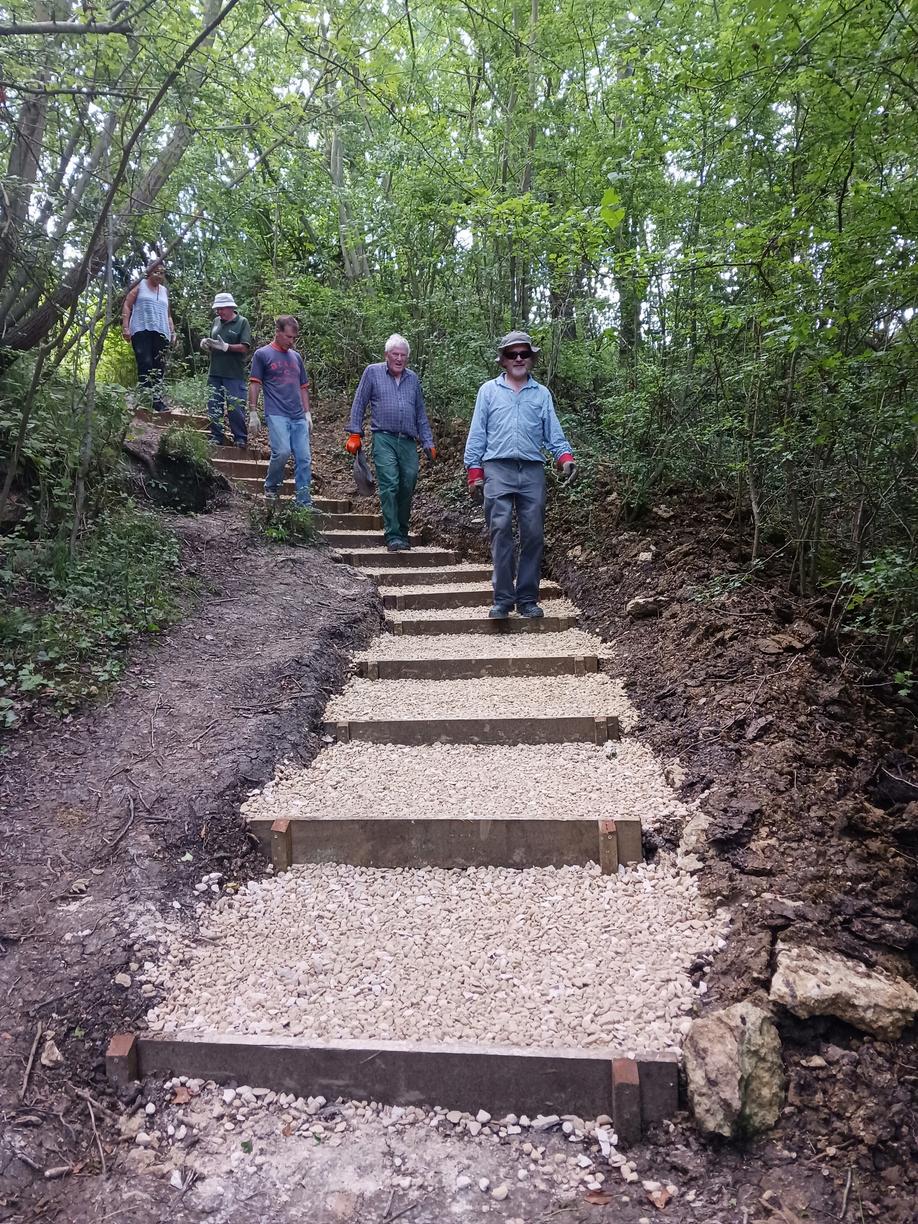




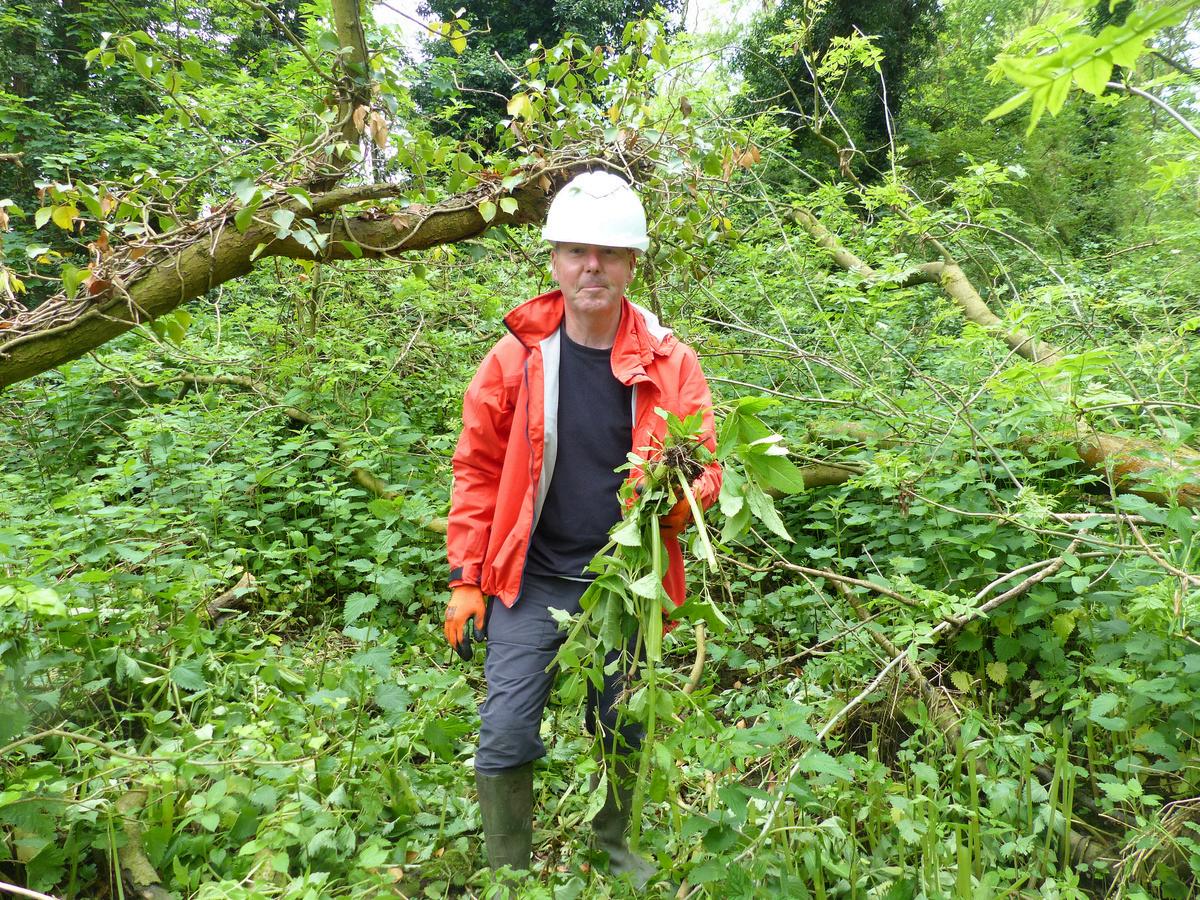
Sophia Attwood-Clarke - Reserves Officer
The removal of the invasive Himalayan Balsam at Narborough Bog has dominated the Western Reserve task plan since the last newsletter release We started at the Northern end of the wet woodland to cut vast stands of it below the first node with brush cutters and slashers, while hand pulling in sensitive areas which supported other flora and potentially fauna, such as the reedbed. Staff from Natural England used a volunteering day to join us one day too, and we soon made it to the other side of the railway line and used the same process in the woodland and alongside the river and meadows. I had suspicions that we had embarked upon the greatest species control mission at the Bog in LRWT history, and this was confirmed on a recent visit by Natural England and Environment Agency personnel, who said that it was the best that they had seen it controlled here.
To the amusement of the Croft Pasture cows, we removed creeping thistle, topped dock, improved access and pulled vigorous undesirables from the patches of ground where the gorse had been in May Isabel and I carried out a botanical survey soon after to monitor the SSSI grassland, which includes the recently cleared patches of ground, so that we can see how this develops (and hopefully improves!) in the coming years with some focus.

There was a tremendous turn out for infrastructure repairs, cutting back path vegetation and creeping thistle control at Dimminsdale most recently, and it was just as well. The first set of steps to the reserve had given up the ghost, as had the handrail and side supports of another. Several rotten posts in the safety fencing around the cliff edge needed replacing and the paths had been swallowed by bramble and nettle While I ran around like a headless chicken, the team worked tirelessly to complete the required work. Andy Denker and Conrad Oatey joined me and a tonne of gravel two days later to properly back-fill the new steps. We deposited the remainder at Kelham Bridge to improve the track in due course
Thank you for your dedication, perseverance and skill sharing, you brilliant bunch. It’s always a pleasure.











Matt Scase - Visitor Centre and Events Assistant
In my last newsletter update I talked about the hatching of our Osprey chick and the terrifying afternoon when we witness it nearly being hit off the nest by a large fish Well, I am delighted to say that the juvenile has made marvellous progress and very quickly started to grow in size and began to look more and more like an Osprey every day. For the first 5 weeks of its life, we could only refer to it as “the chick” as we didn’t have a ring number to call it by, or even the sex of chick. All this would be determined when the ringing took place
The date for the ringing is important to get right, as we had to make sure the young Osprey had not fledged. With this in mind the ringing date was chosen to be the 19th June. Very early that morning, Tim Mackrill (Nature Conservationist & Osprey Expert), George Smith (Information Officer), Tim Sexton (Senior Species and Recording Officer), Beth Fox (Assistant Species and Recording Officer), and myself set off to ring our Manton Bay chick.
The process of ringing on Manton Bay is not the easiest Since the nest is in the middle of the water, we are required to take a boat out to the nest and place a ladder into the water to be able to get up. Tim Mackrill went up the ladder and brought the chick down onto the boat so that we could take the measurements and fit the rings. The chick weighed in at 1.58kg, which meant that we had a male Osprey George was the one fitting the rings and he added a metal BTO ring on the left leg and the blue Davic ring on the right The blue ring was numbered 1R0 and this is what the young Osprey will now be known as. The blue ring is used so that the bird can easily be identified in the field.
Later on the same day Tim Mackrill and George Smith visited another nest site, where 25(10) & 11(10) have been breeding successfully since 2013. 3 chicks were ringed, which were all male, and they have the ring numbers 1R1, 1R2, & 1R3. Hopefully we will soon get the data from all the Osprey nests in the wider Rutland area, so we will know for sure what numbers we have had this year Initial reports indicate that this has been a fantastic year for Osprey chicks.

Once 1R0 had been fitted with his new rings we waited and watched for the moment he would take flight for the first time and leave the nest. In the build up to his fledging we witnessed him doing a lot of “helicoptering” This is him building up his wing muscles by taking short hovering flights above the nest. At first he would only be in the air for a fraction of a second (really no more than an enthusiastic jump), but soon he was able to get enough lift to stay in the air for longer. On one particularly windy day he even left the view point of our webcam, but as he landed back on the nest without touching down anywhere else, this didn’t count as a fledge.
On the 3rd July, just after 8.00am, 1R0 made this maiden flight away from the Manton Bay nest. We expected him to just hop up to the camera perch, but instead, he flew around for 10 minutes before settling on our T perch in the Bay Quite a remarkable first flight considering he wasn’t even 2 months old at this point. This was also a poignant moment for us all here, as it marked the first time since March that the nest was empty.
Despite the fears of some of the visitors to Lyndon, the Osprey didn’t now disappear All three of Maya, 33(11), and 1R0 will remain in the area until mid-August and into September, before making that migration south for the winter. It feels like just yesterday we were celebrating the return of Maya and 33(11), so this will certainly be sad to see them go

As well as the Osprey, there has been loads to see on the Lyndon Nature Reserve in the last couple of months. We have been having some amazing Otter sightings recently (including myself and Laura seeing 2 together one morning from Tufted Duck Hide) A newly installed Kingfisher perch is proving equally popular with the Kingfishers as it is with visitors and photographers Another lovely little spot was a Wood Sandpiper which was outside Shallow Water.
I couldn’t write my little update without talking about some of the other reserves I have been visiting in my free time I love getting out and about, and the LRWT reserves are perfect for getting away from everything and enjoying a few hours in nature. A particular highlight for me was visiting the Launde reserves; Launde Big Wood (which confusingly the smaller of the two) and Launde Park Wood Early in the morning there was the beautiful sound of the birds in full song I was able to see so many, to name just a few include Coal Tit, Marsh Tit, Green Woodpecker, Buzzard. My favourite sighting was certainly seeing some Nuthatches in the trees. I would definitely recommend anyone getting out onto these reserves if you are able.



